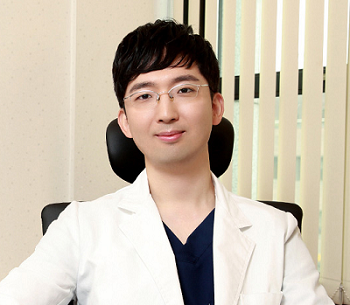
Despite the fluctuating weather, summer has arrived with the beaming sun. Now is the time to thoroughly apply sunscreen (sunblock).
As sunlight is targeted as the main cause of skin aging and skin cancer, sunscreen has become essential in our lives. Hence the number of patients visiting the hospital due to skin problems caused by sunscreen has also increased.
At that, patients throw questions about sunscreen like, “How much sunscreen should we put on,” “what are the types of sunscreen,” and “how to wash it off.” Knowing about important information about sunscreen helps protect skin health from the UV rays that exist not only in the summer but all year around.
I will try to answer the questions in two articles. This week is about the application cycle and the amount of sunscreen you should apply.
■Is it necessary to reapply the sunscreen every two hours?
People say that even if you already put sunscreen on before leaving indoors, you need to reapply every two hours. Is this necessary?
To better understand, it’s helpful to learn about sunscreen’s core concept, SPF (units displaying the blocking effect of UVB rays).
SPF is the value divided by MED after applying sunscreen to the MED (minimal erythema dose) of the bare skin. If your skin turns red in 10 minutes without sunscreen, your bare skin's MED is 10 minutes, but if it turns red in an hour with sunscreen on, it's SPF6 (60 min/10 min). If it turns red in 10 hours (600 min), it will be SPF 60 (600 min/10 min).
In this way, the SPF of certain combinations of sunscreen components will be used as the main ingredient of each sunscreen after obtaining permission via clinical trials.
The average MED of Asians is 20 min and in energy, it’s 60~100mJ/㎠. If a person whose bare skin turns red when exposed to sunlight for 20 min applied sunscreen, 1/30 (1/SPF) of UVB rays are penetrated and absorbed. 20% (120min/20min/*1/30) after 2 hours (120 min) and 12%(120min/10min/*1/50) after 2 hours after applying SPF50 give an effect.
However, there are people whose skin turns red very easily. If MED is comparatively lower than others, for those who turn red after 10 minutes of exposure, 40% (120min/10min*1/30) after 2 hours (120 minutes), and 24% (120min/10min*1/50) after 2 hours of applying SPF50 give an effect.
Therefore, it is better for people who are sensitive to UV rays to apply it more often than only every two hours.
MEDs are 90 mJ/cm2 on the back and 120 mJ/cm2 on the arms and legs on average. In other words, the application period should vary depending on the areas. As the face generally has the lowest MED, it’s right to apply sunscreen more often on it. However, you should be careful of suddenly exposed to sunlight after winter since other areas can sensitively react.
The concept of SPF was created based on the occurrence of erythema caused by UVB rays. The lower the SPF is, the easier the problems from UVB rays occur, especially for people with low minimal erythema dose, which causes redness due to sunlight. UVA measures the minimal amount of persistent pigment darkening instead of the minimal erythema dose with PA or PFA.
■How much sunscreen do you need to apply?
The application cycle calculation mentioned applies only when the sunscreen is applied quantitatively. So how do you know the exact amount needed?
Usually, it is calculated using a finger, but the more accurate method is using up 50g of sunscreen in 25 times, considering that the standard amount is 2g.
If you apply it twice a day, you have to use it up in 12 days, but in fact, it hardly is so. Some patients even use sunscreen they used last year and visit hospitals due to skin problems. Although people worry about UV rays, they might be applying only a small amount.
There are also studies on what happens if you apply less than the amount of sunscreen needed. Under the circumstance that an average of 0.5g-0.8g with a 1/4th of regular spread volume is applied, the SPF decreases to one-tenth. Using 0.5g of SPF50 is the same as applying SPF5.
If MED 20 people apply SPF5, it is highly likely that 100% (100/20*1/5) of sunscreen will no longer function after 100 minutes. If you usually apply less sunscreen than the recommended amount, it is better to apply it every two hours.


